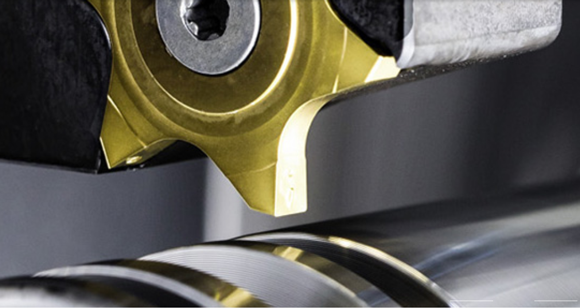ECTA president comments on the cutting tool market
February 15, 2021

During the VDMA Precision Tools’ annual press conference, Markus Horn, European Cutting Tools Association (ECTA) president, delivered an analysis of the current European aspects of the cutting tool and clamping devices industry. His presentation, titled ‘Focus on Europe – How is the economic situation in important neighbouring countries?’, explores the impact of the coronavirus (COVID-19) pandemic on the market and presents his outlook for 2021.
For cutting tool manufacturers throughout Europe, the range of customers and the overall economic situation are not fundamentally different from those of German suppliers, explained Horn; analysis of the EU-27 countries from January to October 2020 shows a negative development similar to what Germany experienced. The COVID-19 pandemic hit everyone in 2020, and overall, the EU-27 countries saw their deliveries drop by 20%, he stated.
Regarding the European domestic market, 60% of cutting tool exports from the 27 EU member states do not leave Europe, Horn stated. Another 13% of total deliveries go to other European countries. This means that the European domestic market is the sales market for almost three-quarters of European tools.
In contrast, tool exports from the EU to the UK are reported to have fallen more sharply after Brexit. The decline was 28%, while the deliveries from the UK fell by 29%. Despite the exemption from customs duties, the trade agreement is said to impose new bureaucratic burdens. For example, since January 1, British products can only be exported with significant customs documents.

Italy was the first to be hit significantly by the pandemic, continued Horn, and reported sharp declines in orders of around a quarter in the first nine months of 2020 due to the imposed company closures. But at the end of the year, production in the automotive industry in Italy picked up again strongly, giving cause for hope.
France also recorded negative developments with the effects of the pandemic and reported declines of 35% in the French market for cutting tools and as much as 50% or clamping devices.
In Spain, the downturn was also said to be severe. The Spanish market is heavily dependent on the automotive industry whose production was also restricted. Here, the recovery has now begun, albeit still somewhat subdued. But the production forecasts for 2021 are positive and the government’s planned investment programmes are likely to boost this further.
Switzerland reported a gradual recovery after its sharp lockdown in April. The watch industry, a vital focus for the country, and the automotive sector picked up again. However, the pandemic situation worsened considerably in October, currently, the number of infection cases is declining.
The largest non-European market is the USA. Traditionally, about one in ten European cutting tool products goes to the American market. Here, deliveries fell by 25%, reported Horn. By contrast, EU-deliveries to the Chinese market only fell by 5% up to October. China, as the second most important sales market outside the EU, was a stabilising factor for European exports.
Horn stated, “I am reasonably confident that in the course of this year we will succeed in containing the pandemic around the globe to such an extent that the majority of our markets will stabilise again and return to growth. For this to happen, international travel must once again be possible.”
“Personally,” Horn continued, “I would be very happy if the decline of the pandemic allows the industry to meet in Bordeaux in June, as we would like to take the opportunity to exchange information about the past year and the forecast for 2021 amongst ECTA members.”
















